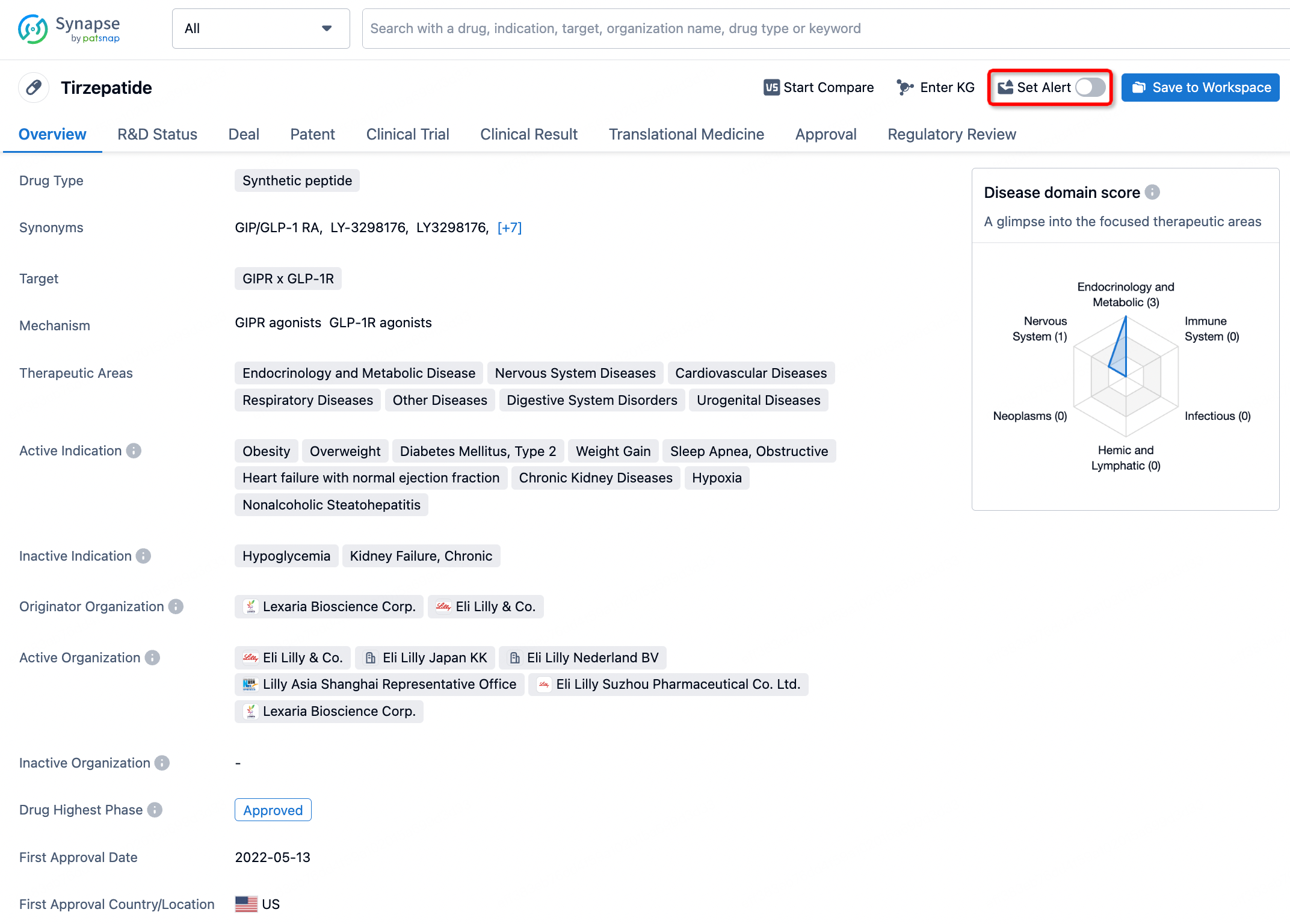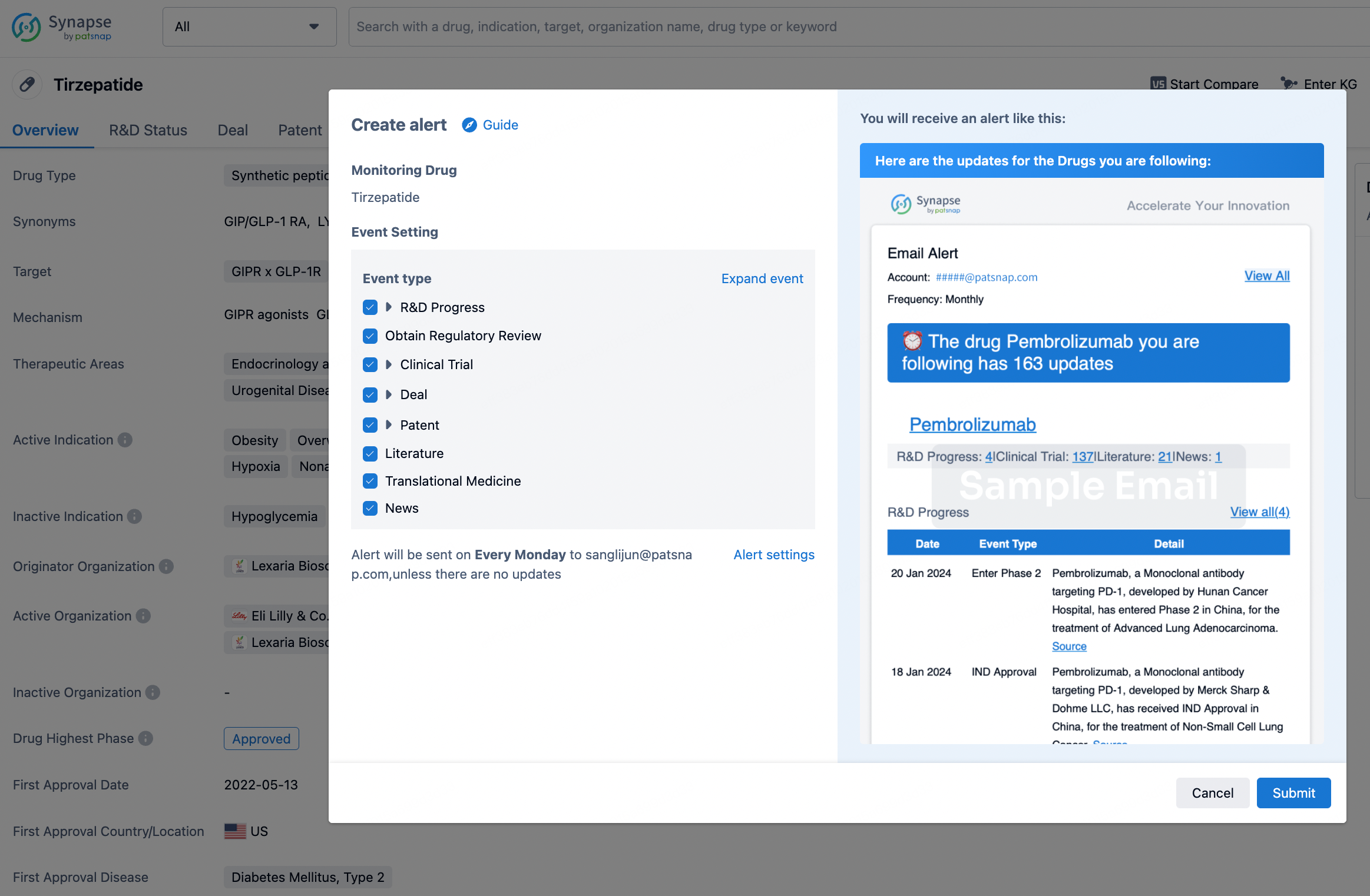Request Demo
What is Olmutinib used for?
14 June 2024
Olmutinib, also known by its trade name Olita, is a cutting-edge drug developed to target specific mutations in non-small cell lung cancer (NSCLC). Primarily, it inhibits the epidermal growth factor receptor (EGFR) with particular efficacy against the T790M mutation, which is known to cause resistance to first-generation EGFR inhibitors. This drug is classified as a tyrosine kinase inhibitor (TKI) and has shown promising results in clinical trials, spearheaded by companies such as Hanmi Pharmaceutical and Boehringer Ingelheim. The drug received breakthrough therapy designation from the FDA and gained approval for use in South Korea in 2016. Researchers have been focusing on its ability to offer a second-line treatment for patients who have developed resistance to earlier EGFR inhibitors like gefitinib and erlotinib.
Olmutinib, through its potent mechanism of action, binds to the ATP-binding site of the mutant EGFR kinase, thereby preventing the phosphorylation of tyrosine residues on the receptor. This inhibition blocks downstream signaling pathways that promote cell proliferation and survival. Notably, Olmutinib shows a higher affinity for the T790M mutation compared to wild-type EGFR, which is advantageous because it means the drug can specifically target cancer cells without causing significant harm to normal cells. The drug's selective binding reduces the likelihood of off-target effects that are commonly observed with earlier-generation EGFR TKIs. Upon binding, Olmutinib essentially 'shuts down' the malignant signaling pathways, leading to apoptosis, or programmed cell death, of the cancer cells.
Administering Olmutinib is relatively straightforward but requires adherence to specific guidelines to maximize its efficacy. The drug is typically administered orally, with a standard dosage of 800 mg taken once daily. Patients are advised to take the medication on an empty stomach, either one hour before or two hours after a meal, to ensure optimal absorption. The onset time of Olmutinib can vary, but therapeutic concentrations are generally achieved within a few hours of ingestion. It is essential for patients to follow a consistent schedule when taking Olmutinib to maintain stable drug levels in the bloodstream. Regular monitoring through blood tests and imaging studies is also necessary to assess the drug's effectiveness and adjust the dosage if required.
Like any medication, Olmutinib comes with its own set of side effects and contraindications. The most common side effects include diarrhea, rash, and nausea. While these are generally manageable, patients should be monitored closely to prevent complications. More severe, though less frequent, side effects can include interstitial lung disease, hepatotoxicity, and cardiac issues. Contraindications for Olmutinib primarily involve patients with pre-existing severe liver or lung conditions, as the drug can exacerbate these issues. Due to the potential for serious side effects, it is crucial for healthcare providers to conduct a thorough medical examination and history before initiating treatment with Olmutinib. Patients are also advised to report any unusual symptoms immediately to their healthcare provider to ensure prompt management of any adverse effects.
Given its specific mechanism of action, Olmutinib can interact with other drugs, which may either enhance or inhibit its efficacy. Drugs that induce or inhibit cytochrome P450 (CYP) enzymes, particularly CYP3A4, can significantly impact Olmutinib levels in the bloodstream. For instance, concurrent use of strong CYP3A4 inhibitors, such as ketoconazole or erythromycin, can increase Olmutinib plasma concentrations, heightening the risk of toxicity. Conversely, CYP3A4 inducers like rifampin and St. John's Wort can lower Olmutinib levels, potentially reducing its efficacy. Additionally, drugs that prolong the QT interval, such as certain antiarrhythmics or antipsychotics, should be used cautiously with Olmutinib due to the risk of additive cardiac side effects. It is imperative for patients and healthcare providers to review all medications, including over-the-counter drugs and supplements, to avoid adverse drug interactions.
In summary, Olmutinib represents a significant advancement in the treatment of NSCLC, especially for patients harboring the T790M mutation. Its targeted mechanism of action, coupled with relatively manageable side effects, makes it a valuable option in the oncologist's toolkit. However, careful consideration of potential drug interactions and close monitoring for adverse effects are essential to ensure the safe and effective use of Olmutinib. As research continues and more data becomes available, the optimal role of Olmutinib in lung cancer therapy will become even clearer, offering hope to patients who have exhausted other treatment options.
Olmutinib, through its potent mechanism of action, binds to the ATP-binding site of the mutant EGFR kinase, thereby preventing the phosphorylation of tyrosine residues on the receptor. This inhibition blocks downstream signaling pathways that promote cell proliferation and survival. Notably, Olmutinib shows a higher affinity for the T790M mutation compared to wild-type EGFR, which is advantageous because it means the drug can specifically target cancer cells without causing significant harm to normal cells. The drug's selective binding reduces the likelihood of off-target effects that are commonly observed with earlier-generation EGFR TKIs. Upon binding, Olmutinib essentially 'shuts down' the malignant signaling pathways, leading to apoptosis, or programmed cell death, of the cancer cells.
Administering Olmutinib is relatively straightforward but requires adherence to specific guidelines to maximize its efficacy. The drug is typically administered orally, with a standard dosage of 800 mg taken once daily. Patients are advised to take the medication on an empty stomach, either one hour before or two hours after a meal, to ensure optimal absorption. The onset time of Olmutinib can vary, but therapeutic concentrations are generally achieved within a few hours of ingestion. It is essential for patients to follow a consistent schedule when taking Olmutinib to maintain stable drug levels in the bloodstream. Regular monitoring through blood tests and imaging studies is also necessary to assess the drug's effectiveness and adjust the dosage if required.
Like any medication, Olmutinib comes with its own set of side effects and contraindications. The most common side effects include diarrhea, rash, and nausea. While these are generally manageable, patients should be monitored closely to prevent complications. More severe, though less frequent, side effects can include interstitial lung disease, hepatotoxicity, and cardiac issues. Contraindications for Olmutinib primarily involve patients with pre-existing severe liver or lung conditions, as the drug can exacerbate these issues. Due to the potential for serious side effects, it is crucial for healthcare providers to conduct a thorough medical examination and history before initiating treatment with Olmutinib. Patients are also advised to report any unusual symptoms immediately to their healthcare provider to ensure prompt management of any adverse effects.
Given its specific mechanism of action, Olmutinib can interact with other drugs, which may either enhance or inhibit its efficacy. Drugs that induce or inhibit cytochrome P450 (CYP) enzymes, particularly CYP3A4, can significantly impact Olmutinib levels in the bloodstream. For instance, concurrent use of strong CYP3A4 inhibitors, such as ketoconazole or erythromycin, can increase Olmutinib plasma concentrations, heightening the risk of toxicity. Conversely, CYP3A4 inducers like rifampin and St. John's Wort can lower Olmutinib levels, potentially reducing its efficacy. Additionally, drugs that prolong the QT interval, such as certain antiarrhythmics or antipsychotics, should be used cautiously with Olmutinib due to the risk of additive cardiac side effects. It is imperative for patients and healthcare providers to review all medications, including over-the-counter drugs and supplements, to avoid adverse drug interactions.
In summary, Olmutinib represents a significant advancement in the treatment of NSCLC, especially for patients harboring the T790M mutation. Its targeted mechanism of action, coupled with relatively manageable side effects, makes it a valuable option in the oncologist's toolkit. However, careful consideration of potential drug interactions and close monitoring for adverse effects are essential to ensure the safe and effective use of Olmutinib. As research continues and more data becomes available, the optimal role of Olmutinib in lung cancer therapy will become even clearer, offering hope to patients who have exhausted other treatment options.
How to obtain the latest development progress of all drugs?
In the Synapse database, you can stay updated on the latest research and development advances of all drugs. This service is accessible anytime and anywhere, with updates available daily or weekly. Use the "Set Alert" function to stay informed. Click on the image below to embark on a brand new journey of drug discovery!
AI Agents Built for Biopharma Breakthroughs
Accelerate discovery. Empower decisions. Transform outcomes.
Get started for free today!
Accelerate Strategic R&D decision making with Synapse, PatSnap’s AI-powered Connected Innovation Intelligence Platform Built for Life Sciences Professionals.
Start your data trial now!
Synapse data is also accessible to external entities via APIs or data packages. Empower better decisions with the latest in pharmaceutical intelligence.


